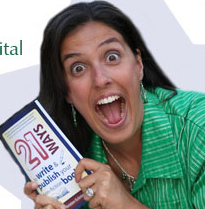Hey there! So, you’ve got a children’s book idea buzzing around in your head, and you’re ready to bring it to life, eh? Awesome! Let’s talk about how you can transform that idea into a published book. Whether you decide to go the traditional route or take the leap into self-publishing, both paths have their perks and quirks. So, let’s dive right in!
Traditional Publishing: The Classic Route
The traditional dream, one that folks ask me about all the time (including in the dentist’s chair unable to speak!) is, well, traditional: getting your book published by one of the big names like Scholastic or Penguin. Here’s how you can make it happen:
- Write a Stellar Manuscript: Before you approach publishers, make sure your manuscript is polished to perfection. Hire a professional editor if necessary (trust me, it’s worth it!).
- Find an Agent: I know, it’s pretty flippant to say “find an agent!” But most traditional publishers almost exclusively work with agents now. A good literary agent can open doors you didn’t even know existed and help negotiate the best deal for you. By the way – remember you DO NOT pay an agent up front! If they ask for that (or if a publisher does), they aren’t working in traditional publishing.
- Submit Your Work: Your agent will submit your manuscript to publishers. If a publisher likes your work, you might just land that dream book deal!
- Be Prepared for Edits: Even if a publisher picks up your book, it will likely go through several rounds of edits, so keep an open mind and be flexible. Remember that publishing a book is a team sport.
It’s a lengthy process that can take years, but for many, the prestige and support of a traditional publisher are worth it.
Self-Publishing: The DIY Adventure
If you’re a go-getter who loves steering the ship, self-publishing might be more your speed:
- Complete Your Manuscript: Like traditional publishing, start with a polished manuscript. Hire a freelance editor if needed.
- Design Your Book: You’ll need to handle (or hire out) the layout and design of your book. Services like Canva or InDesign can be handy tools, or you can hire a professional designer.
- Choose a Platform: Platforms like Amazon’s KDP or IngramSpark offer user-friendly paths to self-publishing both print and ebooks.
- Market Your Book: Here’s where the hustle kicks in. Use social media, local events, and word of mouth to get your book in the hands of readers.
Self-publishing grants you complete control and allows for potentially higher royalties, but it also requires you to wear many hats.
Frequently Asked Questions
Q: How much does it cost to self-publish a children’s book?
A: Costs can vary widely. You might spend anywhere from a few hundred to several thousand dollars, depending on whether you hire editors, illustrators, or designers.
Q: How do I find a good literary agent?
A: Research is key. Check out resources like the Writers’ & Artists’ Yearbook or Publisher’s Marketplace, and be sure to follow submission guidelines when querying agents.
Q: What about marketing my self-published book?
A: Build a strong online presence, create a buzz through social media, and connect with your local community through readings and signings. The more creative, the better!
Whether you choose traditional or self-publishing, remember that both paths demand dedication and passion. After all, you’re not just publishing a book; you’re launching a little bundle of joy into the world! Need more guidance? Check out more resources on Katie Davis’ Blog for aspiring authors.




